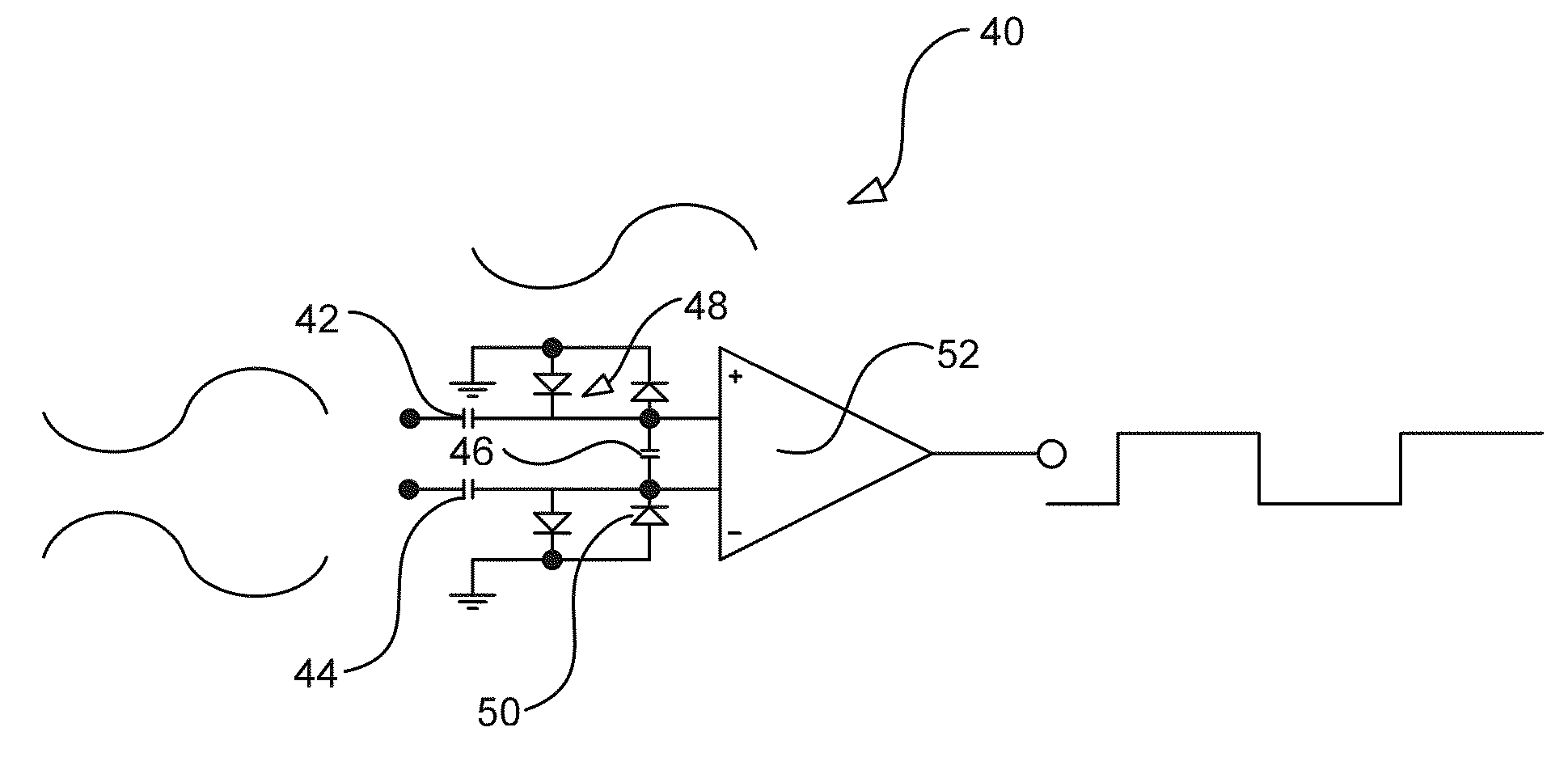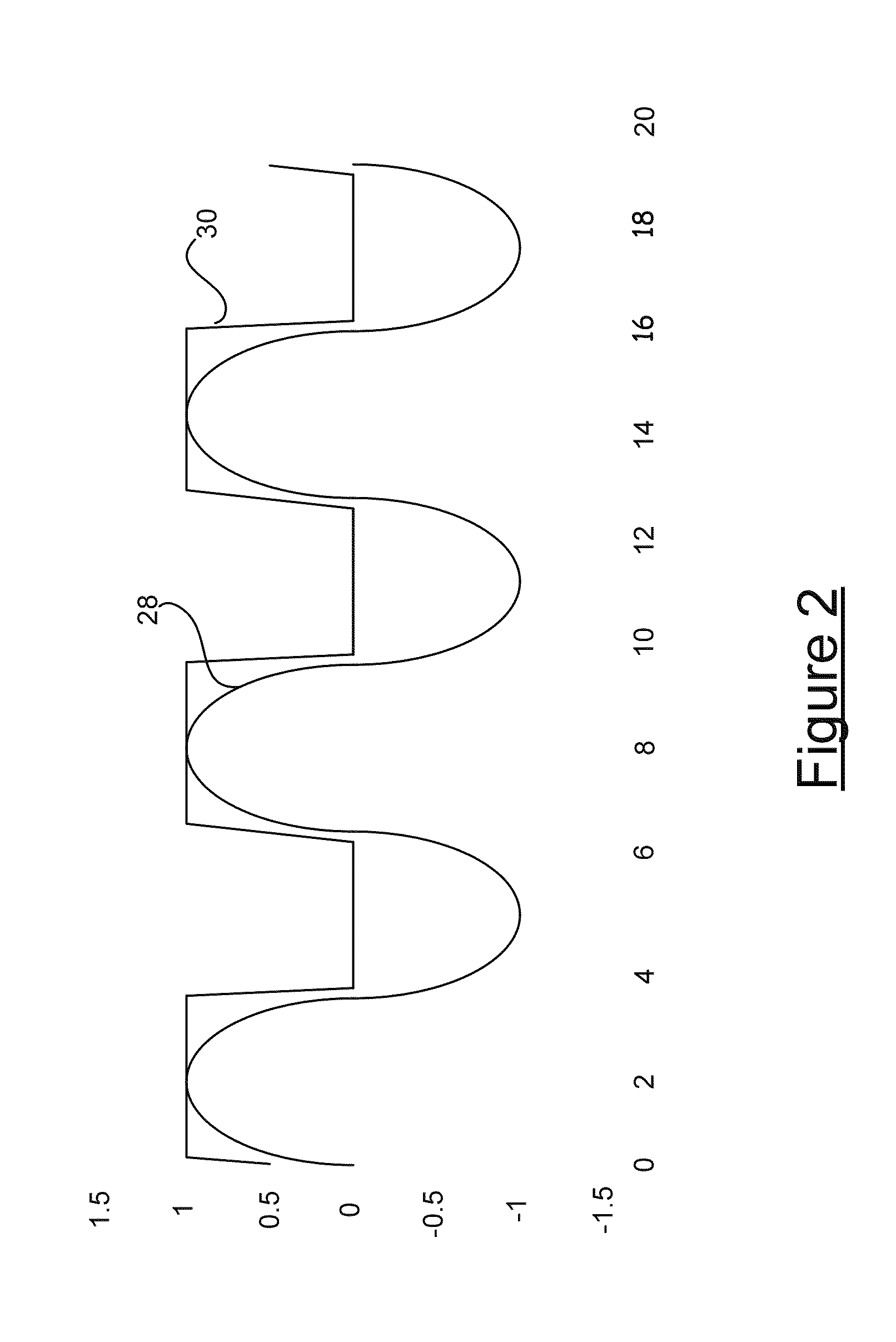Signal level crossing detector circuit
a detector circuit and signal level technology, applied in the direction of pulse technique, high frequency circuit adaptation, instruments, etc., can solve the problems of increased probability of failure of supply, high power dissipation on the low voltage side and, in particular, on the high voltage side, and the inability to meet the requirements of power dissipation and switching speed,
- Summary
- Abstract
- Description
- Claims
- Application Information
AI Technical Summary
Problems solved by technology
Method used
Image
Examples
first embodiment
[0042]Referring now to FIG. 3A, a signal level crossing detector circuit 40 is shown. The signal level crossing detector circuit 40 includes first 42, second 44 and third 46 series connected capacitors, a first 48 and a second 50 pair of back to back diodes and a comparator 52. The first and second capacitors 42, 44 constitute a DC isolator. A first plate of the first capacitor 42 constitutes a first input to the DC isolator and a first plate of the second capacitor 44 constitutes a second input to the DC isolator. Although not shown in FIG. 3A, a voltage source operative to provide a domestic mains signal, such as 230 Vrms at 50 Hz or 120 Vrms at 60 Hz, to the first and second inputs. The second plate of the first capacitor 42 is electrically connected to the non-inverting input of the comparator 52 and to a first plate of the third capacitor 46. The second plate of the second capacitor 44 is electrically connected to the inverting input of the comparator 52 and to a second plate o...
fifth embodiment
[0048]FIG. 7 illustrates signal level crossing detector circuit 90. Components in common with the forth embodiment of FIG. 6 are indicated with common reference numerals. The circuit 90 of FIG. 7 is the same as the circuit of FIG. 6 with the following exception. A pair of back to back diodes 48 is connected between the non-inverting input to the comparator 52 and ground. The back to back diodes 48 provide ESD protection on the low voltage side of the DC isolator formed by the first capacitor. Otherwise the circuit of FIG. 7 operates in the same fashion as the circuit of FIG. 6.
[0049]FIG. 8 illustrates plan 160 and cross-section 162 views of one of the first, second or third capacitors of FIG. 3A are shown in FIG. 8. As can be seen, each of the first 164 and second 166 plates of the capacitor are defined by respective metal layers on the top and bottom surfaces of the printed circuit board. The metal layers are disposed such that they share the same footprint and so that the non-cond...
PUM
 Login to View More
Login to View More Abstract
Description
Claims
Application Information
 Login to View More
Login to View More - R&D
- Intellectual Property
- Life Sciences
- Materials
- Tech Scout
- Unparalleled Data Quality
- Higher Quality Content
- 60% Fewer Hallucinations
Browse by: Latest US Patents, China's latest patents, Technical Efficacy Thesaurus, Application Domain, Technology Topic, Popular Technical Reports.
© 2025 PatSnap. All rights reserved.Legal|Privacy policy|Modern Slavery Act Transparency Statement|Sitemap|About US| Contact US: help@patsnap.com



